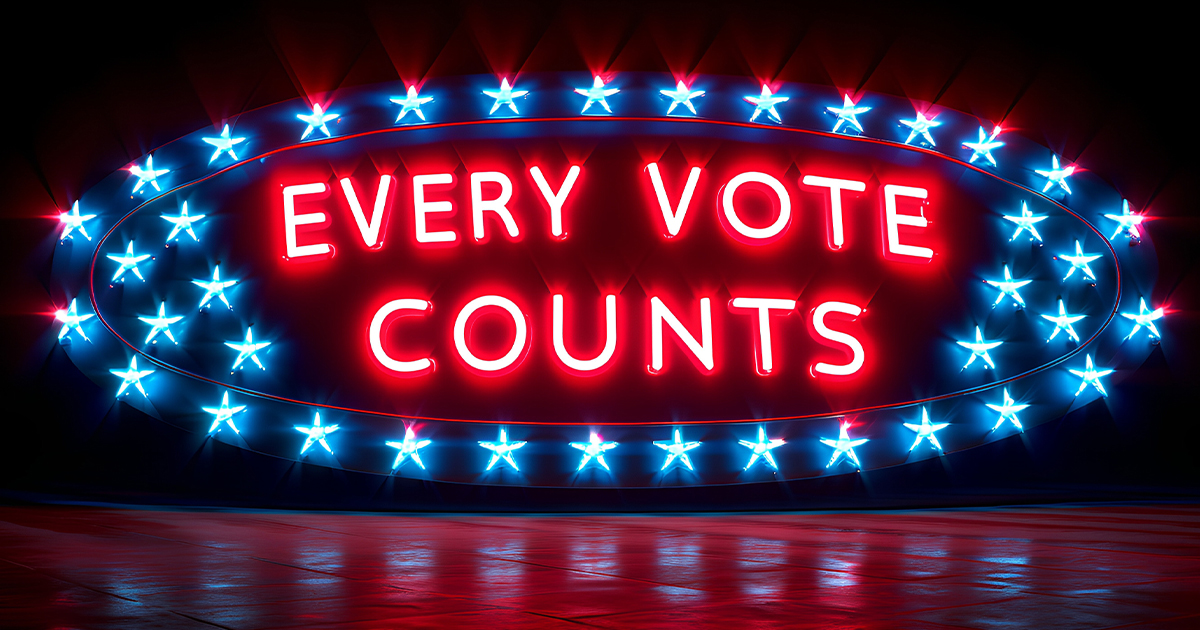When Election Day wraps up, people naturally want answers fast — who won, and by how much? But as we know, Election Night doesn’t always bring final results. Recently, Protect Democracy – a cross-ideological group dedicated to building more resilient democratic institutions – assembled a helpful guide to how Election Day and the following days are likely to play out in many of the 2024 swing states. The following information comes directly from Protect Democracy’s report, a full version of which you can read here.
What’s an unofficial call and how is it different from final results?
When news outlets “call” a race, they’re making an unofficial projection of the outcome based on the numbers so far, not the final state certification. This early call doesn’t wait for every single vote to be counted. Instead, it’s based on models that indicate whether the trailing candidate has enough ground to make up to win.
Official results, on the other hand, are verified by a complete count and certified state canvass, which can take a little longer and include potential recounts or legal challenges.
How do news outlets make their calls?
News outlets don’t call a race lightly. They look at:
›› The current margin between candidates;
›› How many ballots are left to count; and
›› Where those remaining ballots are coming from (since votes from different areas can lean differently).
If a state’s race margin is tight enough to warrant a recount, media outlets will often hold off on calling the state until the recount is complete. So, even if some races are called quickly, don’t be surprised if others take more time to reach a clear result.
Election Night might not be enough for a final answer.
With swing states in play, we might not know who the next president is on Election Night.
Margins are key: If a candidate’s lead is more than 0.5 percent, we may get quicker results. Based on the way things went in 2020 and recent updates, Protect Democracy expects that, in most cases, we’ll see faster results for states with comfortable margins.
What’s helping to speed things up?
›› Fewer mail ballots than in 2020, allowing for quicker processing;
›› Expanded pre-canvassing in Arizona, Georgia, and Michigan. This means that these states can start sorting and preparing mail ballots for counting before Election Day, which wasn’t allowed in all states in 2020; and
›› Earlier mail-in ballot deadlines in states like North Carolina, Nevada, and Pennsylvania mean fewer last-minute ballots to count.
What could slow things down?
Some states have unique processes and rules that could delay results:
›› In Arizona, ballots are two pages in 2024, so it’ll take longer to count them. Plus, officials are required to hand-count every mail ballot dropped off on Election Day.
›› In North Carolina, new rules mean that no early or absentee votes can be counted until polls close on Election Day, adding extra time to the tabulation.
If the margin is razor-thin, say less than 0.5 percent, we could be in for a longer wait, especially in states like Pennsylvania, Nevada, and North Carolina. This would involve counting every provisional and late-arriving ballot, and if it’s close enough, a recount may add even more time to the wait.
For example, in 2020, Georgia’s final call came 16 days after the election, once the hand audit was complete.

Will we see a ‘blue shift’?
A “blue shift” happens when mail ballots, which tend to favor Democrats, push the final count in their direction. But because there will be fewer mail ballots in 2024, any “blue shift” won’t be as dramatic or as drawn-out as in 2020. We might see this happen in Pennsylvania, where there’s still a strong Democratic lean in mail-in votes.
In contrast, states like Arizona, North Carolina, and Georgia could see a “red shift” after early and mail votes (often favoring Democrats) are tallied, with Election Day votes — often leaning Republican — coming in later in the count.

The waiting period: Legal challenges and disputes over ballots
In close races, legal battles over which ballots should count might intensify. This is already brewing in several states:
›› In Pennsylvania, there have been disputes over certain types of provisional and mail ballots; and
›› In Nevada and North Carolina, there have been disputes around mail ballot processing, registration form challenges, and military ballots.
These lawsuits could impact the final counts, especially if the margin is narrow enough to bring ballots under legal scrutiny.
The bottom line: Democracy takes time.
Expect a lot of patience-testing moments and media speculation this week. But remember, our election processes are designed to ensure every vote is counted and verified. As with 2020, it may take some time before we have an official answer, but that’s part of ensuring accuracy in our democracy.
Election Night’s suspense is real, but so is our election officials’ commitment to getting it right. Stay tuned, stay informed, and let’s see where the ballots take us.
Read the full report from Protect Democracy


